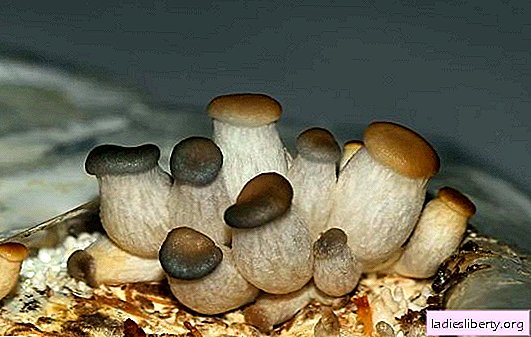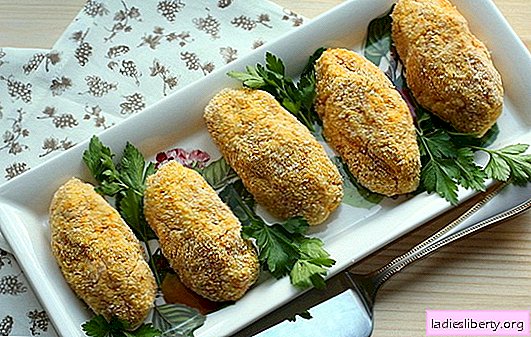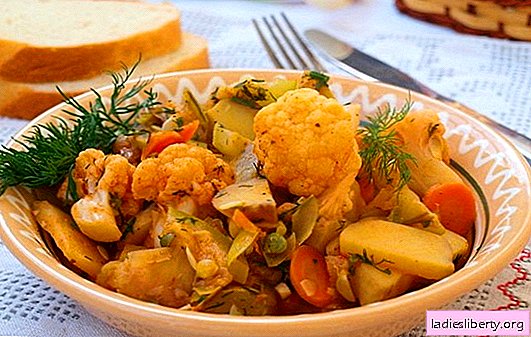
Each of us sometimes wants to taste aromatic porcini mushrooms. They turn every dish into a royal treat! But it’s difficult to buy them in the store, and fresh ones are simply impossible, you can only buy them on the market in the fall. And the price of this product makes you think - an expensive mushroom. Therefore, many gardeners are thinking about growing porcini mushrooms on their site.
How to grow porcini mushroom
It is unprofitable to grow these mushrooms in large quantities, for this reason the products are produced mainly by small "mushroom farms" organized by private gardeners. The complexity of the symbiosis of certain species of trees and porcini mushrooms, these conditions are very difficult to create in an industrial environment. In a small area, this is much simpler or you can adapt a separate room for this. These organisms are "friends" mainly with birch, oak, coniferous trees, and they develop well in mixed plantings.

Recently, breeders from the Netherlands managed to develop a variety of ceps that can grow normally in greenhouses, greenhouses and similar rooms. Having bought such a mycelium, anyone can use a mushroom grower. But not everyone can organize the specific conditions that porcini mushrooms require.
There are 2 ways to grow ceps:
1. Extensive - obtaining products in natural conditions (on the site in the open air). A simple and inexpensive way, but in such conditions you should not count on a good yield, it depends on the weather;
2. Intensive - organization of a special habitat for mushrooms. This technology requires significant costs, preparing a special room and installing equipment in it creating a special microclimate. The yield in this case will be stable, and you will receive much more mushrooms, and a quick harvest will allow you to return the money spent in a short time.

Preparatory work
There are several ways to prepare seed, but there are two effective and simple methods.
In the first case, I propagate porcini mushrooms using hats from old mushrooms. It is necessary to plant spores from them under such species of trees in which maternal mushrooms grew. For example, if the mushroom was taken under a pine tree, then the seed must be planted under a similar tree. I put the hats in a solution of potassium permanganate, diluted with rainwater, the concentration of 1 g of manganese per 10 liters of water. In a bucket, you can put about 10-15 mother hats no more than 20 cm in diameter. If it is not possible to collect large and beautiful hats in nature, then you can use dried material and even let loose worms for planting, only rotten ones will not work.
Attention! Dip 10 sugar cubes into the solution to help organize a saturated environment.
Soaked hats, knead with your hands, allowing the spores to mix with water, this operation must be performed until a homogeneous porridge is obtained from the mushrooms. The mess is left to settle for 6-7 hours.
The second option for preparing seed from mushrooms is more difficult. Preparation should be started a month before sowing spores, the composition of the mixture includes 5% of rotten oak wood, burning leaves and horse manure. The bucket is laid in layers 20 cm thick - manure, mushroom caps and leaves, all moisten with a 1% solution of ammonium nitrate and soak everything for a week. Then heat the contents of the bucket to 36-40 degrees and mix everything into a homogeneous slurry.
Both methods of preparation are suitable for growing ceps, the main thing in this case is not to violate the technology. The breathability of the substrate is of great importance - without the required amount of air, the mycelium will grow very poorly and the risk of illness by mold sowing will increase markedly. The substrate is mixed from dried stalks of corn, substandard buckwheat, sunflower husk, straw. Partially, sawdust of deciduous trees is used for this purpose, but for the first time it is better to grow mushrooms on husks or straw.

Attention! You can not use waterlogged substrate in it can not add rotten and moldy components. If you still added too much water, suspend it for 2-3 days to allow excess moisture to the glass.
The substrate must be well ground, it must be able to absorb moisture like a sponge. A good mixture springy when pressed, but water does not protrude from it - after that, boldly plant mycelium into it.
The subtleties of the choice of seed
Negligent traders can sell defective goods so as not to be mistaken:
1. Before purchasing mycelium, consult with experienced people and find out a reliable seller;
2. Foreign suppliers sell high-quality mycelium, but still the first time you buy only a small batch of goods;
3. Specify the strain and variety of the acquired fungus;
4. Find out how quickly the fouling of grains occurs, whether the fungus can withstand mold well;
5. Check how much mycelium can be stored;
6. Check what temperature in the package, overheated during transport, the mycelium can die, a suitable temperature for it is about 20 degrees;
7. The color of the mycelium should be red with small splashes of yellow. Green or black spots are noticeable, an ammonia smell is heard - it is unusable;
8. After acquiring, put the mycelium in the refrigerator, it must be maintained at a temperature of at least 3-4 degrees Celsius (it should not be put in the freezer). So it can be stored up to 3 months;
9. After the purchase, immediately cool the packaging with mycelium;
10. It is important to grind the chilled mycelium in the bag before sowing, without removing it from there. Otherwise, planting material will be exposed to temperature shock and may die;
11. Be sure to observe sterility - treat the bag before opening with antibacterial agents, cover the table with clean oilcloth, and use clean gloves when working.
Growing porcini mushrooms
These organisms are propagated in a greenhouse or shed in three stages - preparing the mycelium, mixing and preparing the substrate, and arranging a suitable room.
The prepared substrate, first you need to pour boiling water for 60-80 minutes (it is not necessary to remove it from plastic bags), then drain the water and put the substrate under the load, there it should cool down to 25 degrees. If you steamed it in bags, then you can not cut it, but cut a few holes to remove excess water.
When the substrate cools down, deliver it to a pre-treated room (bleach 1% concentration). Inoculate the substrate with mycelium, ventilation must be turned off at this time, windows and doors must be closed. Pour the substrate onto a disinfected surface and spread the mycelium on it, mix everything well. Domestic products need to be added in an amount of 3-5% of the weight of the substrate, 2.5% is enough for foreign products.
Put the seeded substrate in bags of 5-15 kg, when laying the mass must be well sealed. After that, squeeze the bags on one side and cut several holes in them to let air in.
If you have not violated the instructions, mushrooms will begin to appear in dense splices. It is important to maintain a temperature of about +25 degrees (in a bag it will be higher - approximately +30 degrees). When exceeding +30 degrees, the mushrooms may not germinate.











